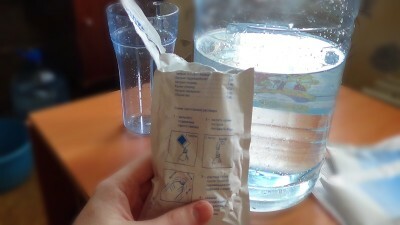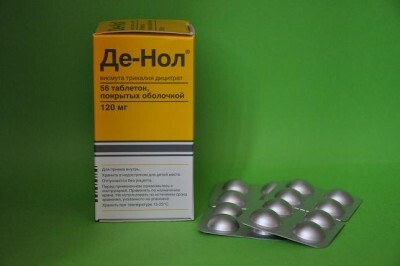1 Structure of the organ
The organs of the gastrointestinal tract are the elements of the whole mechanism, in which each of them is responsible for a certain area of work. The main gastrointestinal tract are:
- oral cavity;
- is a swallowing duct that connects the esophagus with the mouth;
- esophagus, connecting the stomach with the mouth;
- muscular stomach bag;
- the initial section of the thin 12 duodenum;
- intestine departments;
- liver.
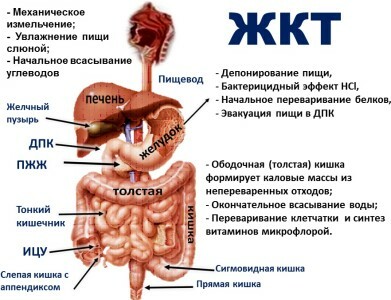
Recommended to read
- Food not digested in stomach
- Bulb of duodenum
- Effective preparations for intestinal dysbacteriosis
- Effective remedy for gastritis and gastric ulcer
The mouth is a collection of masticatory and swallowing segments, salivary glands, microflora and taste buds. The process of digestion begins with the ingestion of food into the oral cavity, where it under the influence of saliva turns into a soft mass. The secret secreted by the salivary glands helps in the breakdown of carbohydrates, some of which enter the circulatory system. Doctors advise to chew the food well, to prepare the process of processing food, to stimulate the work of other organs involved in its processing.
The movement of food takes place along a path that connects the digestive tract and the respiratory system - the pharynx. At the very beginning of its entrance are tonsils, which are the main barrier in the attack of parasites. The glands are the first to take the shock and begin to resist them, using the immune capabilities of the body. Any viral disease begins with an inflammation of the tonsils.
A special role is assigned to the esophagus, which delivers food to the stomach. The esophagus is located vertically in the chest, its lower part passes into the abdominal cavity through the aperture in the diaphragm, which is wound with a muscle loop. If there are no abnormalities in the stomach, it is located below the diaphragm. This does not allow food to enter the esophagus.
2 Anatomical data
Stomach is a cavitary organ in the form of a sac, which can take more than 1 liter of contents. It is in this organ that the most important work of the digestive tract takes place - the chemical processing of food and its disinfection. This process contributes to the juice released by the cells of the gastric mucosa, which consists of water, mucus, hydrochloric acid and enzymes involved in the breakdown of the protein. Sour reaction is normal. Only Helicobacter in hydrochloric acid does not die, on the contrary, provoking ulcer diseases.
-
 IMPORTANT TO KNOW! Gastritis? Ulcer? To have a stomach ulcer not turned into cancer, drink a glass. ..Read the article & gt; & gt;
IMPORTANT TO KNOW! Gastritis? Ulcer? To have a stomach ulcer not turned into cancer, drink a glass. ..Read the article & gt; & gt;
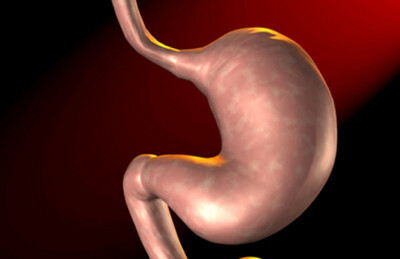
With high acidity, the gastric mucosa is protected by substances that make up the bicarbonate mucous barrier. With a low level of protective functions, the stomach can be affected by its own gastric juice, which can provoke the appearance of ulcerative and erosive pathologies. There are situations when gastric juice, getting into the esophagus, leads to trauma to the inner layer of the esophagus, causing heartburn. At low acidity, the process of digestion of food decreases and resistance to infections decreases.
In addition, the stomach is surrounded by blood vessels, they receive blood and nerve receptors that help in its work. Food, digested in the stomach, enters the small intestine, where the process of splitting fats, proteins and carbohydrates occurs. The small intestine begins with the 12 duodenum, the central organ of the digestive process. It goes to the main ducts of the digestive glands - from the liver - bile-excreting, pancreatic.
In addition, it is an important hormonal organ that regulates the intensity of stomach peristalsis, the activity of the gallbladder and pancreas. Her hormones affect the increase in leukocytes in the blood and the energy metabolism. An upset in the work of this important organ leads to a breakdown in the entire digestive system of the body.
-
 Gastroenterologist VAZHENOV: "I beg you, if you began to worry about abdominal pain, heartburn, nausea, do not in any way do gases. .."Read more & gt; & gt;
Gastroenterologist VAZHENOV: "I beg you, if you began to worry about abdominal pain, heartburn, nausea, do not in any way do gases. .."Read more & gt; & gt;

Only the hard-to-digest remains of food enter the large intestine. In it, biological processes associated with microorganisms occur. The largest digestive gland in the body is the liver. It detoxifies dangerous toxins, participates in the metabolism. Cells of the liver secrete bile, which is needed to digest fats, to remove toxic substances that are insoluble in water. Further from the liver, the bile passes along the bile ducts.
3 Possible diseases
If all the processes of the digestive tract work in a timely manner, accurately, the cavity organs and digestive glands show a normal rate of work, then one can talk about full digestion and assimilation of food. In addition, a sufficient amount of gastric juice and enzymes should be released. The guarantee of healthy digestion is the normal state of the mucosa and intestinal microflora.
To a greater extent, diseases of the gastrointestinal tract are inflammatory in nature. This process is the reaction of the body to a certain type of damage, which shows different symptoms:
TIP FROM THE MAIN GASTROENTEROLOGIST
Korotov SV: "I can recommend only one remedy for the rapid treatment of Ulcer and Gastritis, which is now recommended by the Ministry of Health. .."Read reviews & gt; & gt;
- disorders in blood supply;
- swelling;
- functional malfunctions in the operation of the diseased organ.

A failed organ can cause illness of nearby other organs. Many diseases of the gastrointestinal tract become a consequence of each other. So, chronic pancreatitis can provoke inflammation of the 12 duodenum, cholangitis - chronic pancreatitis.
There are various causes of digestive system diseases. One of them is the infection of worms in areas where digestive processes are to be performed. They select the juices necessary for digestion, secrete toxins, block the work of the purifying blood system, provoke the inflammatory process, disrupting the state of many organs. The processes caused by the attack of parasites have a negative impact on the functioning of the immune system. Helminths can cause the development of an independent illness, negatively affect the existing diseases of the stomach and intestines.
Complex pathology can complicate symptoms and treatment. Chronic diseases have long periods of flow with periods of relapse, which causes patients to constantly maintain the system with therapy that reduces the risk of recurrence and complication of the disease.

4 Infringement in children
Digestive diseases in children are observed not less often than colds and viral. Often these types of diseases cause a breakdown not only of the stomach and intestines, but also of many other organs, which affects the general condition of the child. At the same time, the metabolism, the water-salt balance, is disturbed. This condition is called intestinal toxicosis, the symptoms, the treatment of which requires medical attention. Recently, the data of the World Health Organization speak of frequent deaths with digestive system ailments suffered by children in the first years of life.
Pathologies of the gastrointestinal tract in children can manifest themselves against the background of other pathologies of the heart, respiratory and urinary system of the body due to intoxication, hypoxia, malfunctions in the circulatory system, disorders of the central nervous system and motor skills. Spasms( dyskinesia) of many parts of the stomach and intestines can occur due to impaired muscle tone in the pathology of the child's nervous system.

Signs of acute diseases of the digestive system are manifested in the form of toxicosis, characterized by fever, pallor, dehydration, weight loss. As a rule, severe symptoms, the treatment of which requires hospitalization, are especially dangerous for children of the first year of life. When intestinal infections doctors prescribe compliance with the epidemiological regime in the home or stationary conditions.
5 Animals and pathology
Cats and other animals also suffer from diseases of the gastrointestinal tract. The most common in cats and other domestic pets are:
- Acute catarrhal gastritis, which is an inflammation of the stomach with a violation of motility and secretion. The disease can appear as a result of the cat's consumption of poor-quality food, which it was difficult for her to digest. This can happen due to overeating, heart failure, with concomitant diseases of an infectious nature. Symptoms and treatment of the disease belong to chronic types of the disease, so they prescribe a diet and constantly observe the condition of the animal before establishing a stable remission.
- Ulcer disease in dogs and feline breeds is characterized by the appearance of ulcers on the gastric mucosa. The cause of this are heavy, roughage, stress, ingestion of traumatic objects, pancreatitis. Indicated in the treatment of diet and vitamin therapy.
- Acute gastroenteritis manifests itself in the form of inflammation of the stomach and intestines, mucosa and submucosal, muscle layer. The disease is very similar to the symptoms of acute gastritis, but with the addition of a sharp loss of weight and a decrease in muscle tone. In medical therapy include antibiotics, vomitive and laxatives, vitamins, diet.
- Poisonings of a different nature by lead, salt, nicotine.
- The most serious disease in a dog and a cat is cancer of the stomach or intestines.
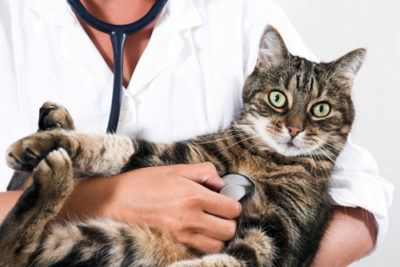
6 Treatment measures
It is worthwhile to consult a doctor with subsequent diagnosis and treatment when the first signs of an illness have appeared: acute or dull pain in the abdominal cavity, frequent heartburn, vomiting, bad breath, increased flatulence, alternation of diarrhea and constipation, if beginsa sharp decrease in body weight. After diagnosis, the doctor prescribes treatment appropriate for the disease with a mandatory dietary type of food.

It is urgent to give up the habit of eating dry, and also refuse from acute, salty and other types of aggressive food. In no case should you overeat. The food should be full and varied. It should include diet-authorized diets, cereals, boiled meat, vegetables. Do not eat foods that cause bowel or fermentation in the intestines. The food should be warm. Eat small meals, but often, up to six times a day.
It is necessary to refrain from smoking and drinking alcoholic beverages. It is more worth spending time in places that fill with positive emotions, because one of the main reasons for the development of gastrointestinal diseases is stress.
As a preventive measure, once a year, an ultrasound examination of the internal digestive organs should be performed to be able to eliminate the onset of negative processes in the body.
Very often in the treatment of gastrointestinal diseases include the use of herbal phytopreparations based on herbs such as chamomile, calamus, aloe, mint, calendula, celandine, dog rose, St. John's wort and others, which have anti-inflammatory and antibacterial properties. The effectiveness of natural components is particularly recognized in the treatment of peptic ulcer diseases of the stomach and duodenum caused by the Helicobacter bacterium. To eliminate painful symptoms in therapeutic herbal medicine include plants that have an antimicrobial effect, which can reduce the activity of hydrochloric acid, protect the mucosa from external influences.
The most effective are: chamomile pharmacy, ayr( root), flax seeds. Plants are prepared in the form of broths and infusions. In view of the fact that these plants do not have allergic and adverse reactions, they are allowed to be used by children.
- 1 Structure of the body
- 2 Anatomical data
- 3 Possible diseases
- 4 Infringement in children
- 5 Animals and pathology
- 6 Treatment measures
The gastrointestinal tract is responsible for processing food entering the body, extracting nutrients from it and transferring it to the blood, and also removing it from the body. Any failure in this process can cause serious disruption to the work of the whole organism, so if there are problems with the gastrointestinal tract, they must be solved as quickly as possible. The correct approach to troubleshooting GI symptoms helps prevent very serious complications, sometimes leading to death or disability.
Do you have gastritis?
GALINA SAVINA: "How easy is it to cure gastritis at home for 1 month. A proven method - write down a recipe. ..!"Read more & gt; & gt;

